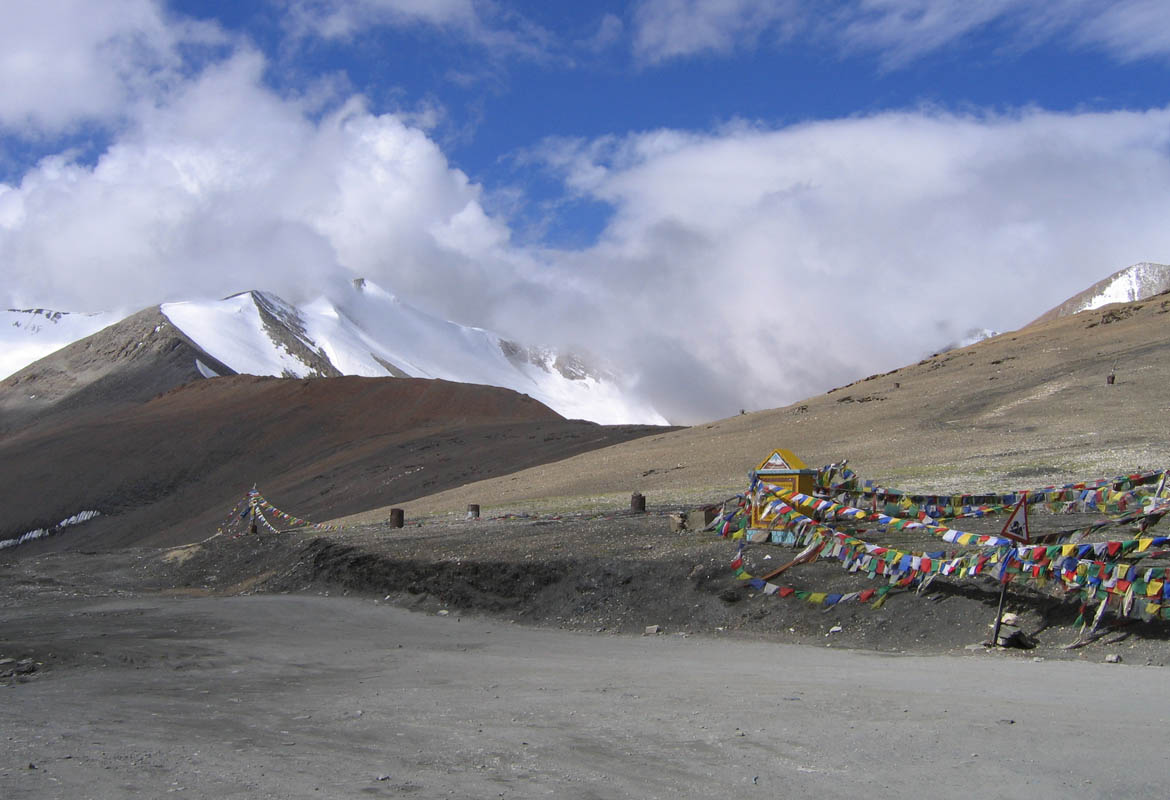Ladakh, popularly known as 'the Moon Land', 'Little Tibet', and 'the last Shangri La' is one of the most popular tourist destinations of India, situated in the state of Jammu and Kashmir. The region of Ladakh, has Leh as its capital city. The places of Alchi, Nubra Valley, Hemis, Lamayuru, Zanskar Valley, Kargil, Pangong Tso, Tso Kar & Tso Moriri are part of the Ladakh region.Ladakh is a hill station, with spectacular landscapes at altitudes of 2750 m & higher. Ladakh is one of those places with unparalleled beauty of its barren stretches of land, lush green patches, gurgling streams & rivers, nestled in the midst of large expanses of snow capped mountains of the majestic Himalaya's. Its unfathomable beauty, almost musical silence of nature, earthy shades of brown against the turquoise blue & the welcoming people of Ladakh need to be experienced to be known.
Attractions:

Drang-Drung Glacier: The three day voyage from Leh Zanskar valley is crammed with natural marvels like stunning glaciers, spectacular mountain ranges and fruit orchards. A glacier is a big, sluggish stream of ice, bent from trampled sheets of snow, that gradually distorts and surges in accordance with gravity. One among the biggest glaciers in India, Drang-Drung Glacier offers the picturesque scenery of the snow capped mountain peaks of the Himalayas.A lengthy and meandering river of snow and ice, "Drang-Drung" glacier in Ladakh. It is from the cliff-like proboscis of this all-embracing glacier that the Stod or Doda offshoot of the Zanskar River heaves at an elevation of 14500 feet of Pensi La, the Drung Durung glacier looks gorgeous and awe inspiring.

Pangong Lake : Situated at an altitude of about 4,350 m is the famous and endorheic Pangong Lake, in Pangong region near Leh. With an extension 134 km from India to Tibet, the lake is the main attraction in Pangong region. During winter the lake freezes completely, despite of being saline and one can visit during tourist season from May to September. It is reachable from Leh, which is only five-hour drive, while one requires an Inner Line Permit for visiting this lake as it lies on the Sino-Indian Line of Actual Control. Indian nationals can have individual permits while others require having group permits (minimum of 3 persons) accompanied by an accredited guide. The tourist office in Leh issues permits for a small fee. For security reasons, boating is not permitted in Pangong Lake.

Stok Palace : A short distance across the Indus River, near Leh (14 km) stands the Stok Palace, a major tourist attraction in Leh. Built in 1825 AD by King Tsespal Tondup Namgyal, it is a striking palace where the ancient and modern architectures meet together making the beautiful home. The palace is reachable by jeeps or through shared taxis.Famous for beautiful gardens and the view of sunrise as well as sunset is amazing from the Stok Palace.At present, the palace is open to visits and presents a collection of royal attires, crown and other royal materials. It will take around 4 to 5 hours to explore the whole palace.

Suru Valley: Kargil is a part of Suru Valley and this valley forms the mainstay of Kargil district. Situated on the north-eastern foothills of the great Himalayan Wall, the valley extends 140 km beyond the town of Kargil to the Penzi la pass which is the entrance of the Zanskar Valley. The valley is picturesque especially in spring when the apple, apricot and mulberry tree are all in bloom and in autumn when they are laden with fruits. It is worth visiting place to experience the serene beauty of nature.

Tso kar Lake: is located nearly 240 km southeast of Leh. This lake is popular among the bird watchers as it hosts many amazing birds which include black necked cranes, brahmni ducks, bar-headed geese and great crested grebe. The lake also attracts many wildlife lovers and most easily spotted mammals here are the Kiangs, the largest of the wild asses. Surrounded by hills and mountains on all sides, the lake itself gives a wonderful scenic view drawing many visitors.

Alchi Monastery: Alchi village in Leh is famous for the existence of one of the oldest monastery in Ladakh, Alchi Monastery. Located on the banks of Indus River, the monastery is also called as Alchi Choskhor. Great translator Rinchen Zangpo is credited as the founder of the monastery and the monuments preserved here dated back to 12th century. It is only the monastery that has been built on a flat ground. Managed by the monks of Likir Monastery, the monastery houses two main temples including Alchi Du-khang and the Sum-tsek. Besides, the monastery complex also has the Temple of Manjushri, Lotsawa Lha-khang, Lha-khang Soma and 3 Ka-ka-ni (entrance) chortens.

Tso Moriri Lake: Situated nearly 210 km from Leh district in the Rupshu valley in Changthang sub-division is the dazzling Tso Moriri Lake. Standing at a height of about 4,900 m, with a length of about 28 km and width varying from 5 to 7 km, Tso Moriri Lake claims to be one of the beautiful and largest lakes in Ladakh. Surrounded by snow-capped mountains on all sides, the view of the lake is amazing. The lake is well known for spotting some of the popular wild species of Ladakh, especially kiang, or natural ass. One can also get to see groups of travelling nangpa or bar-headed birds, along with sporadic flocks of pashmina goats and champs of travelling herders.


